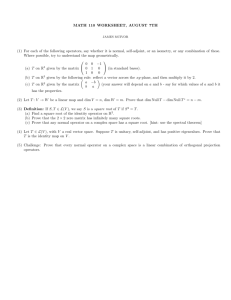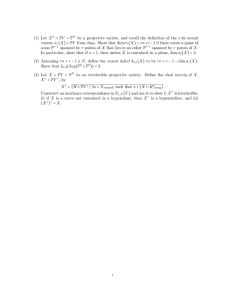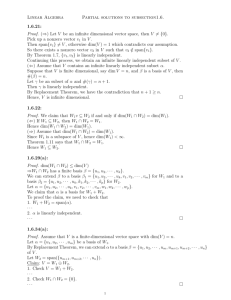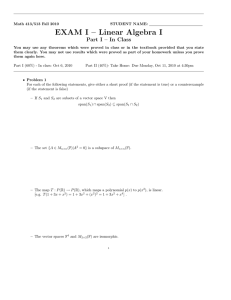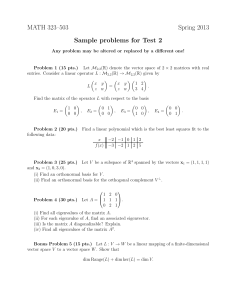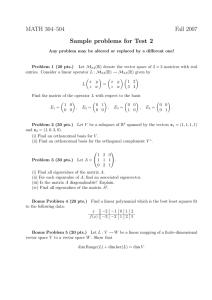Some useful facts about vector spaces over fields Definition. F so that:
advertisement
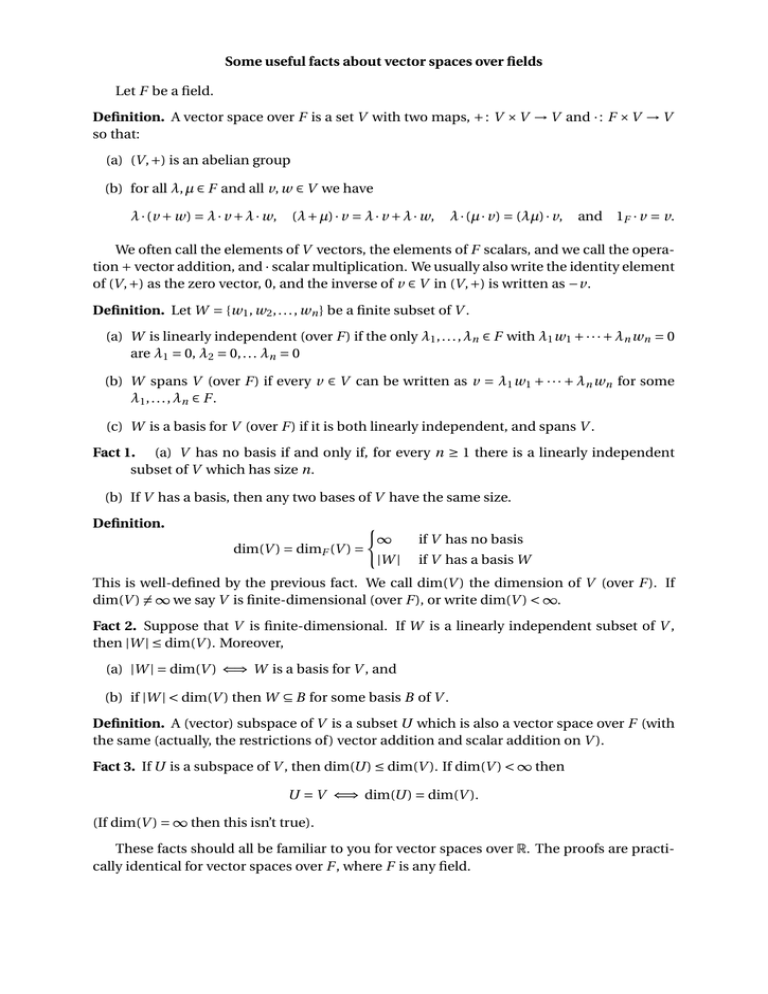
Some useful facts about vector spaces over fields
Let F be a field.
Definition. A vector space over F is a set V with two maps, + : V × V → V and · : F × V → V
so that:
(a) (V, +) is an abelian group
(b) for all λ, µ ∈ F and all v, w ∈ V we have
λ · (v + w) = λ · v + λ · w,
(λ + µ) · v = λ · v + λ · w,
λ · (µ · v) = (λµ) · v,
and 1F · v = v.
We often call the elements of V vectors, the elements of F scalars, and we call the operation + vector addition, and · scalar multiplication. We usually also write the identity element
of (V, +) as the zero vector, 0, and the inverse of v ∈ V in (V, +) is written as −v.
Definition. Let W = {w 1 , w 2 , . . . , w n } be a finite subset of V .
(a) W is linearly independent (over F ) if the only λ1 , . . . , λn ∈ F with λ1 w 1 + · · · + λn w n = 0
are λ1 = 0, λ2 = 0, . . . λn = 0
(b) W spans V (over F ) if every v ∈ V can be written as v = λ1 w 1 + · · · + λn w n for some
λ1 , . . . , λn ∈ F .
(c) W is a basis for V (over F ) if it is both linearly independent, and spans V .
Fact 1. (a) V has no basis if and only if, for every n ≥ 1 there is a linearly independent
subset of V which has size n.
(b) If V has a basis, then any two bases of V have the same size.
Definition.
dim(V ) = dimF (V ) =
(
∞
|W |
if V has no basis
if V has a basis W
This is well-defined by the previous fact. We call dim(V ) the dimension of V (over F ). If
dim(V ) 6= ∞ we say V is finite-dimensional (over F ), or write dim(V ) < ∞.
Fact 2. Suppose that V is finite-dimensional. If W is a linearly independent subset of V ,
then |W | ≤ dim(V ). Moreover,
(a) |W | = dim(V ) ⇐⇒ W is a basis for V , and
(b) if |W | < dim(V ) then W ⊆ B for some basis B of V .
Definition. A (vector) subspace of V is a subset U which is also a vector space over F (with
the same (actually, the restrictions of ) vector addition and scalar addition on V ).
Fact 3. If U is a subspace of V , then dim(U ) ≤ dim(V ). If dim(V ) < ∞ then
U = V ⇐⇒ dim(U ) = dim(V ).
(If dim(V ) = ∞ then this isn’t true).
These facts should all be familiar to you for vector spaces over R. The proofs are practically identical for vector spaces over F , where F is any field.


